Maytime (1937) and The Great Gatsby (1949)
By Toronto Film Society on December 16, 2022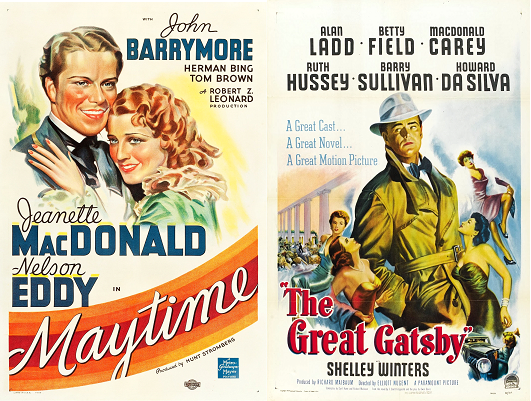
Toronto Film Society presented Maytime (1937) on Monday, August 16, 1982 in a double bill with The Great Gatsby (1949) as part of the Season 35 Summer Series, Programme 6.
MAYTIME (1937)
Production Company: Metro-Goldwyn-Mayer. Producer: Hunt Stromberg. Director: Robert Z. Leonard. Screenplay: Noel Langley, based on the play by Rida Johnson. Photography: Oliver T. Marsh. Technical Director: George Richelavie. Editor: Conrad Nervig. Sound: Douglas Shearer. Gowns: Adrian. Music: Sigmun Romberg, with added music and musical direction by Herbert Strothart. Special Lyrics: Bob Wright and Chet Forrest. Opera Sequencs: William Van Wymetal. Adaptations of Music of Tchaikovsky, Delibes, Wagner, Bellini and others. Film opened at the Capitol Theatre, New York, March 18, 1937.
Cast: Jeanette MacDonald (Marcia Mornay/Miss Morrison), Nelson Eddy (Paul Allison), John Barrymore (Nazaroff), Herman Bing (Archipenco), Tom Brown (Kip), Lynne Carver (Barbara), Rafaela Ottiano (Ellen), Charles Judel (Cabby), Paul Porcasi (Trentini), Sig Rumann (Fanchon), Walter Kingsford (Rudyard), Guy Bates Post (Louis Napoleon), Edgar Norton (Secretary), Anna Demetrio (Madame Fanchon), Iphigenie Castiglioni (Empress Eugenie), Joan LeSueur (Maypole Dancer), Russell Hicks (Voice Coach), Frank Puglia (Orchestra Conductor), Harry Davenport, Harry Hughes, Howard Hickman (Opera Directors).
THE GREAT GATSBY (1949)
Production Company: Paramount. Producer: Richard Maibaum. Director: Elliott Nugent. Screenplay: Cyril Hume and Richard Maibaum, from the novel by F. Scott Fitzgerald and the play by Owen Davis. Photography: John Seitz. Music: Robert Emmett Dolan. Editor: Ellsworth Hoagland. Costumes: Edith Head. Makeup: Perc Westmore. Film opened in New York, July 13, 1949.
Cast: Alan Ladd (Jay Gatsby), Betty Field (Daisy Buchanan), Macdonald Carey (Nick Carraway), Ruth Hussey (Jordan Baker), Barry Sullivan (Tom Buchanan), Howard Da Silva (Wilson), Shelley Winters (Myrtle Wilson), Henry Hull (Dan Cody), Carole Matthews (Ella Cody), Ed Begley (Myron Lupus), Elisha Cook, Jr. (Klipspringer), Nicholas Joy (Owl Man), Walter Greaza (Kinsella), Tito Vuolo (Mavromichaelis), Ray Walker (Real Estate Salesman), Diane Nance (Pamela), Jack Lambert (Reba), Jack Gargan (Golf Pro), Lynne and Jeanne Romer (Twins).
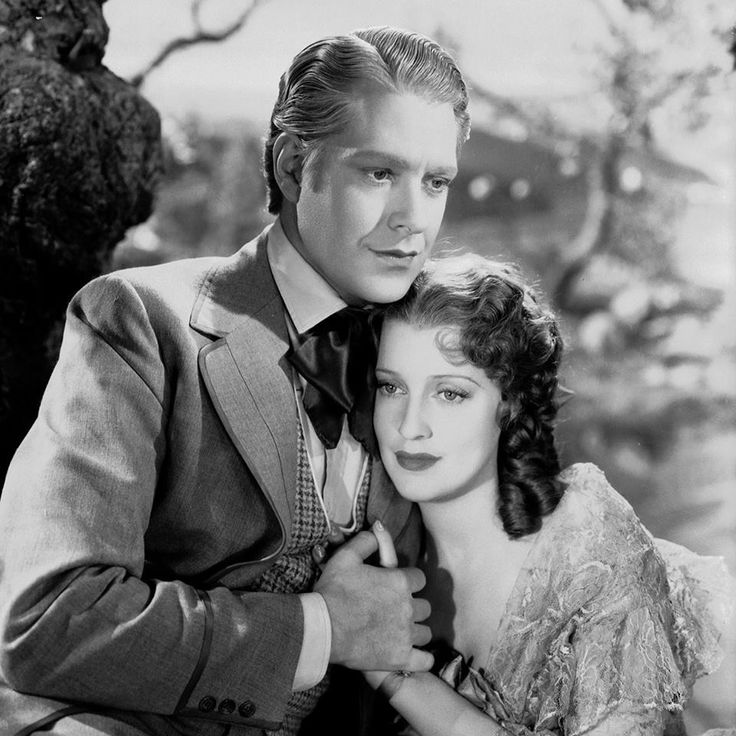
Over the past month and half, we have shown a variety of films concerning love relationships, our theme for this summer. There have been the young lovers of Romeo and Juliet and Jeremy, and the middle-aged lovers of Dear Heart and Marty. There has been the treachery of love depicted in The Heiress, and the fickleness in Rhapsody, plus the mother-love of Pilgrimage and To Each His Own. Last week concentrated on May-September (December?) love in Love and Pain and the Whole Damn Thing and Harold and Maude. Although tonight’s two films differ in many ways, they both have one theme in common–unrequited love. In Maytime, Marcia’s love for Paul is as doomed as Gatsby’s love for Daisy. Both films feature unhappily married women, and in both there is a climactic shooting involving distraught husbands. With that comparisons end, because they are quite different stories.
Maytime was first a stage operetta in 1917 with Peggy Wood, and a silent film version was made in 1923 with Ethel Shannon and Harrison Ford, featuring a young Clara Bow. The present film united Jeanette MacDonald and Nelson Eddy for the third time, and is considered by many to be their finest effort. It was Jeanette MacDonald’s favourite film, giving her the chance to develop a strong characterization, plus an opportunity to wear the best costumes of any of her films. Irving Thalberg was to have produced Maytime as MacDonald and Eddy’s first technicolor feature, and shooting began in 1936 under the direction of Edmund Goulding.
With the sudden death of Thalberg, Louis B. Mayer took over, scrapped what had already been shot, and decided to shoot in black and white. Goulding was replaced by Robert Z. Leonard, and John Barrymore replaced Paul Lukas. The film has a good story line, good music, and superb photography. It is literate and intelligent and sumptuously mounted. Metro rebuilt a Metropolitan Opera House of 1875, and the palace of Louis Napoleon was created. The film contains the first grand opera music written for the screen, created by Herbert Strothart from Tchaikovsky’s Fifth Symphony, appropriately romantic music from one of the greatest of the romantic composers. The operatic montages are skilfully introduced, especially in the fictional opera, Czaritsa. Both principals sing their hearts out, the audience is transfixed, and poor John Barrymore (the husband) is stabbed to the heart. It is cinematic, opulent pageantry.
The “eternal triangle” is played out once again, and in a prologue and epilogue Miss MacDonald is an old lady living in obscurity in a small American town, dreaming of her lost love. On May Day in 1906 she helps to unite two young lovers who remind her of years gone by. Today’s feminists would probably give short shrift to her advice to a young singer to forget her singing ambitions and accept the man she loves and who loves her, but we are dealing with a simpler time when issues were, perhaps, not as complex as they are now. The film is beautiful and sentimental, as in the lovely scene at the May Day Fair where Jeanette is being pushed in a vine-covered swing by Eddy as blossoms spill through the air and they both sing “Will You Remember?” Present-day audiences sometimes seem hard and cynical, rather than sophisticated, without a shred of sentiment in their souls, and some will no doubt find the feelings expressed in the film amusing, especially the wildly sentimental ending. Perhaps the Chicago Daily News put it best when, on the death of Jeanette MacDonald, January 14, 1965, they said: “The older folks will mourn and remember Miss MacDonald and the young will never know what they missed.” She was buried at Forest Lawn in the Sanctuary Have–next to Alan Ladd.
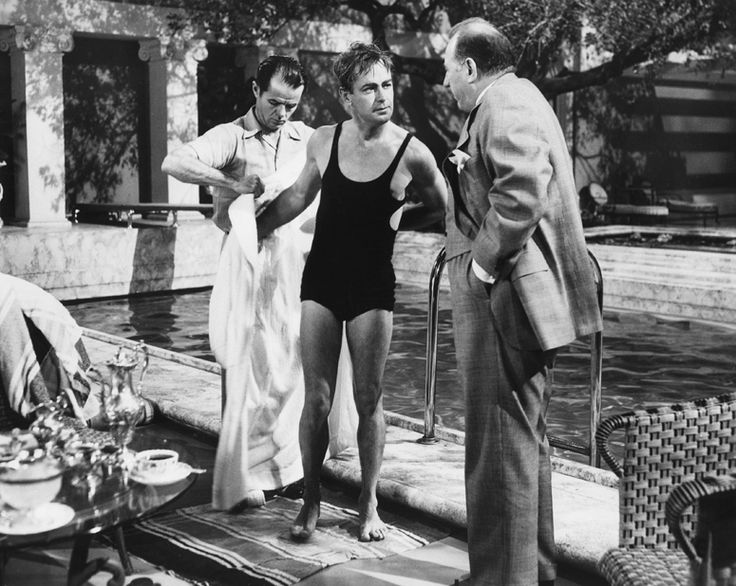
F. Scott Fitzgerald’s The Great Gatsby was unsuccessfully staged in 1926, and the same year a silent film version was made with Warner Baxter and Lois Wilson. Tonight’s version is the first remake, the second being the 1974 production with Robert Redford and Mia Farrow. All three were produced by Paramount. I have not seen the silent version, but of the two sound versions, neither totally captures the essence of the novel, though Alan Ladd’s sadly appealing Gatsby comes closer to the title character than Robert Redford’s more “civilized” portrayal. Howard Da Silva, who appeared in both films, put it best: “Redford could never play a man from the other side of the tracks. Ladd could and did.” Alan Ladd was fascinated by Fitzgeralds’s writing–he also shared Fitzgerald’s tendency to introspection and alcoholic retreat. In playing a stoic loner, Ladd knew the territory.
Jay Gatsby is a man who rises from poverty to wealth but finds little happiness with it. The idea that money is the only thing that matters is instilled in him at an early age, and he relentlessly uses his wealth in his single-minded pursuit of the love of Daisy Fay, his onetime sweetheart, now unhappily married to Tom Buchanan. The meretricious Daisy is hardly worth it, but then love is blind, and this particularly holds true for Gatsby.
Alan Ladd’s performance dominates the film and rightly so, yet it is a film often overlooked in his long career. Aside from Shane, it is, probably, his best acting performance, the role almost tailor-made for him.
If, as they say, love makes the world go round, I hope tonight’s two films will provide an enjoyable and satisfying ride on this complex and very human emotional merry-go-round.
Source Material: Marilyn Henry and Ron DeSourdis, The Films of Alan Ladd (New Jersey: Citadel Press, 1981)
Lawrence J. Quirk, The Great Romantic Films (N.J.: Citadel Press, 1974)
Notes by Barry Chapman
You may also like...
-
News

Frances Blau
Toronto Film Society | February 27, 2024On Monday, February 26th, 2024, Toronto Film Society lost longtime friend, supporter, and board member Frances Blau. Known for her sense of humour, her love of film, her generosity,...
-
Special Events

Monday Evening Film Noir Double Bill at the Paradise Theatre
Toronto Film Society | July 8, 2024The Toronto Film Society presents a film-noir double feature at one low price! The Window (1949) in a double bill with Black Angel (1946) at the Paradise Theatre on Monday, August...
Programming

Virtual Saturday Night at the Movies
Toronto Film Society | July 20, 2024Toronto Film Society is back in the theatre! However, we’re still pleased to continue to bring you films straight to your home! Beginning Season 73 until now we have...
4-
 Toronto Film Society | July 8, 2024
Toronto Film Society | July 8, 2024
Monday Evening Film Noir Double Bill at the Paradise Theatre
-
 Toronto Film Society | November 6, 2022
Toronto Film Society | November 6, 2022
-
 Toronto Film Society | August 1, 2023
Toronto Film Society | August 1, 2023
Donate to Toronto Film Society – We’re now a Registered Charity!
-
Copyright © 2017 Toronto Film Society.

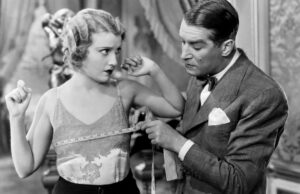
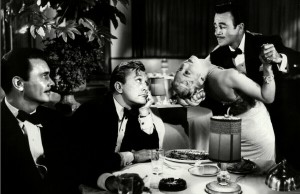
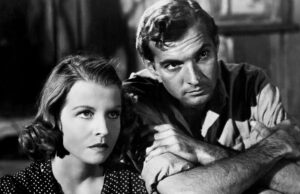
Leave a Reply